20+ SAMPLE Food Safety
-

Food Safety Management Plan
download now -
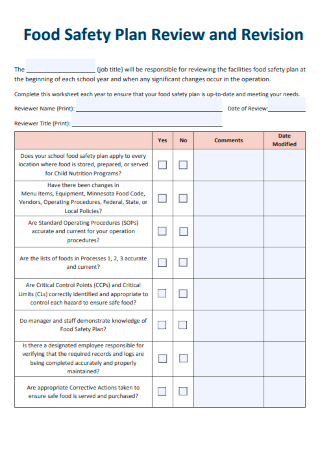
Food Safety Plan Review and Revision
download now -
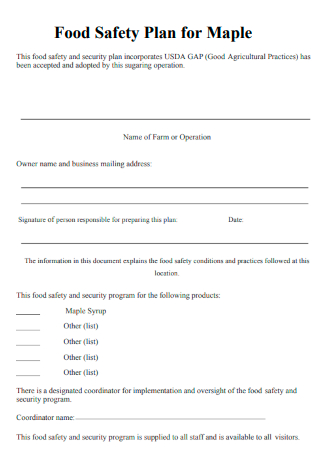
Food Safety Plan for Maple
download now -
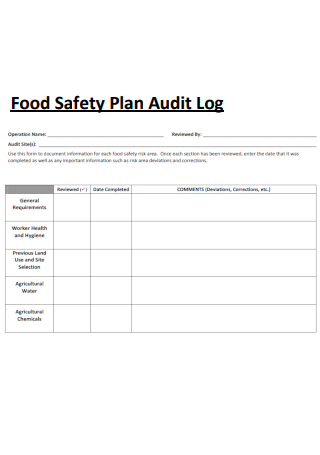
Food Safety Plan Audit Log
download now -

Food Safety Service Plan
download now -
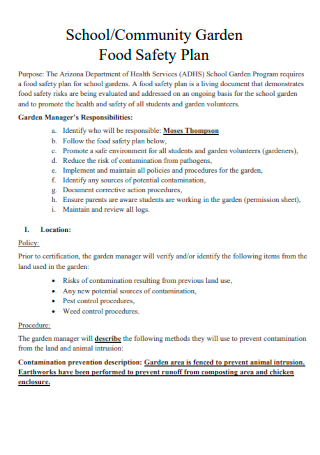
School & Community Garden Food Safety Plan
download now -
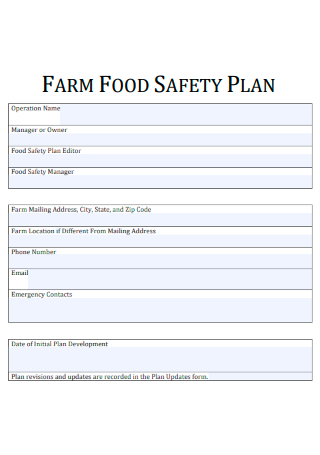
Farm Food Safety Plan
download now -
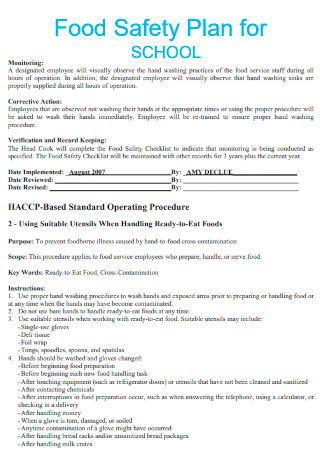
Food Safety Plan for School
download now -
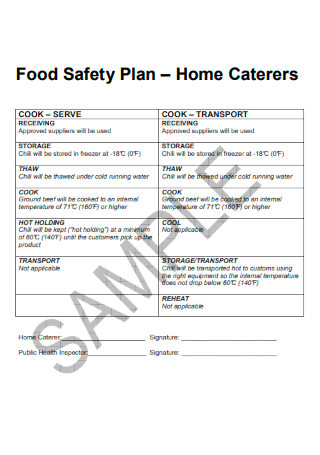
Food Safety Plan Home Caterers
download now -
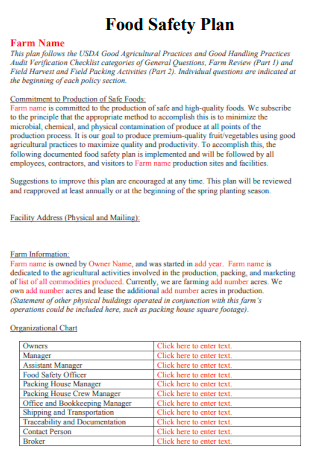
Basic Food Safety Plan
download now -
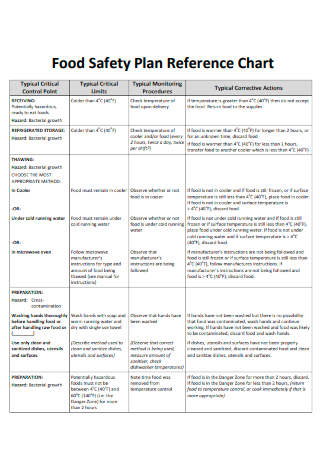
Food Safety Plan Reference Chart
download now -
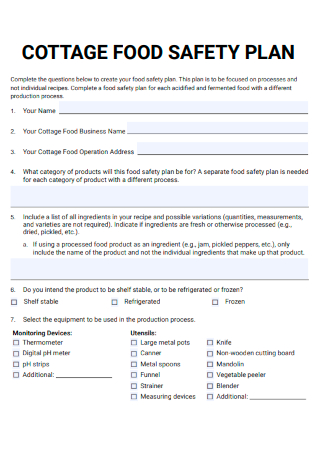
Cottage Food Safety Plan
download now -
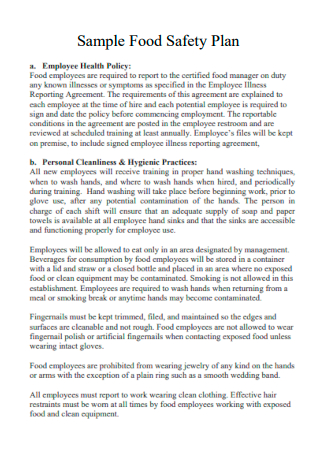
Sample Food Safety Plan
download now -
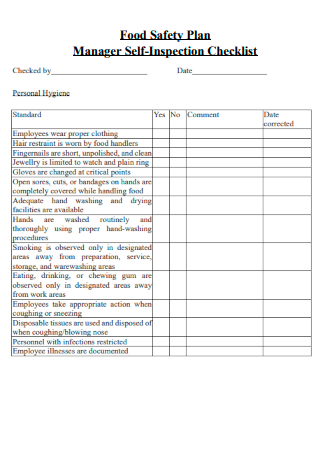
Food Safety Plan Manager Self Inspection Checklist
download now -
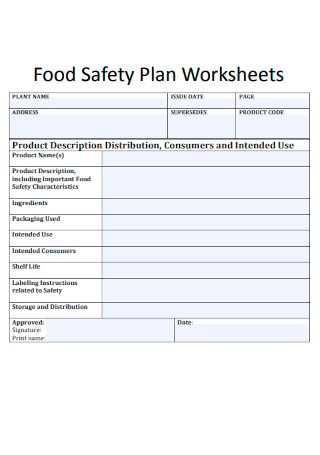
Food Safety Plan Worksheets
download now -

Food Safety Plan Checklist
download now -
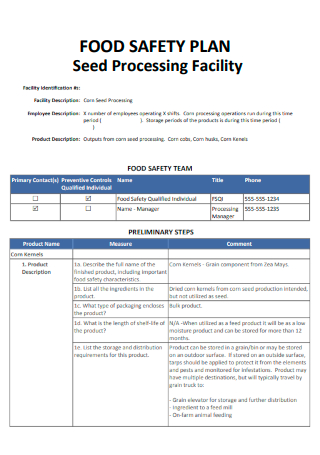
Food Safety Plan Seed Processing Facility
download now -
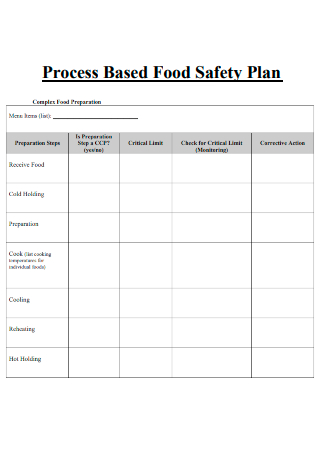
Process Based Food Safety Plan
download now -
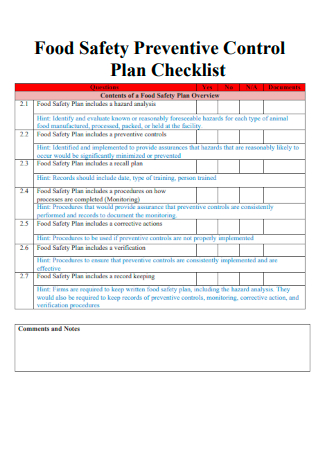
Food Safety Preventive Control Plan Checklist
download now -
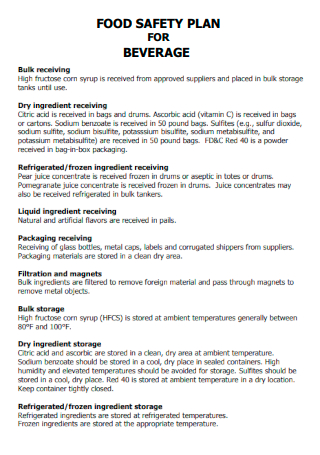
Food Safety Plan for Beverage
download now -
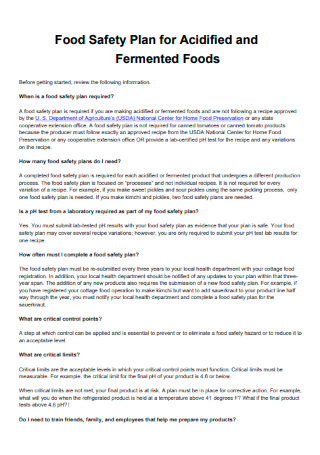
Food Safety Plan for Acidified and Fermented Foods
download now
FREE Food Safety Plan s to Download
20+ SAMPLE Food Safety
What Is a Food Safety Plan?
Tips on Food Safety Preparation
Things to Know before Implementing a Food Safety Plan
How to Write a Food Safety Plan
FAQs
Why is it important to have a food safety plan?
What is a safety management plan?
What is essential for food safety?
What Is a Food Safety Plan?
A food safety plan is one of the major documents in a preventative controls food safety framework that offers a systematic method for identifying food safety hazards that must be addressed in order to avoid or reduce the possibility of foodborne illness or injury. Whether it is to address the production or manufacturing means of the food provider, the aims remain consistent for the safety and health of the consumer. Before you decide to begin writing the Plan, you can redirect your attention to view the food safety plan example as an additional reference.
Tips on Food Safety Preparation
According to the World Health Organization, more than 200 illnesses, ranging from diarrhea to cancer, are caused by unsafe food containing hazardous bacteria, viruses, parasites, or chemical chemicals. Common errors, such as preparing food several hours before consumption and storing it at temperatures that promote the growth of pathogenic bacteria and/or the formation of toxins; insufficient cooking or reheating of food to reduce or eliminate pathogens; cross-contamination; and people with poor personal hygiene handling the food, can all be major contributors to the development of hazardous effects. It goes without saying that food safety, nutrition, and security are all intertwined.
Things to Know before Implementing a Food Safety Plan
If you work for an establishment or a company, there will be steps you need to follow prior to even setting the food safety plan in motion. This curated list will serve as a reminder so that you are aware of what you need to prepare for before proceeding to the guide below where you will find the guide on the necessary information and contents of the aforementioned plan. With that being said, continue reading the article to find out more regarding the food safety plan.
How to Write a Food Safety Plan
The Food Safety Modernization Act (FSMA) of the FDA is intended to protect public health by implementing a preventative, risk-based approach to food safety regulation. FSMA marks a sea change in rules, shifting from how to respond to contamination to adopting effective safeguards to avoid it. To comply with the rules, registered firms focus on building an updated food safety system, which necessitates the creation of a documented food safety strategy. Documentation of the concepts stated below must be included as part of the elements in a food safety plan. You might find the utilization of the restaurant food safety plan template to be useful.
1. Conduct a Hazard Analysis
Any biological, chemical, or physical feature that might make a product dangerous for human ingestion is considered a food safety hazard. This first critical stage entails determining which of these food safety concerns may exist at any point in your food manufacturing procedures, from purchase and shipping to handling and serving. All potential dangers must be noted. Once the dangers have been identified, the following stage is to document whether or not they are serious. Other techniques to determine the significance of danger include locating any evidence of past customer complaints related to the hazard, as well as any recorded outbreaks or recalls related to the hazard.
2. Updated Preventive Controls for Hazards
If danger is assessed to be considerable, it will necessitate the implementation of a preventative measure if one is not already in place. Any threats that are not deemed severe will also need documentation. This simply means recording the actions you used to establish which dangers necessitate preventative measures and which do not. If any new dangers are discovered throughout this process, you must update your preventative measures and document the changes. The FDA as necessary actions describes preventive Controls or PCs to ensure that dangers needing preventive control are reduced or avoided.
3. Effective Monitoring Procedures
Monitoring measures are put in place to ensure that preventative controls are carried out consistently. According to the FDA, if a heat treatment is required to kill germs, adequate monitoring might involve periodic assessing actual temperature values at important stages, followed by noting the date and time the monitoring activity occurred. Food safety monitoring at most restaurants, hotels, stores, and other food service providers entails manually verifying the temperature, humidity, and condition of food storage spaces, as well as recording the completion of cleanliness inspections and the temperature of raw and cooked food.
4. Corrective Action Procedures
If a problem with preventative control is discovered when monitoring the food production process, remedial steps must be implemented to resolve the issue. Corrections are actions done to quickly detect and remedy a minor, isolated problem. Corrective steps are implemented to limit the risk of the problem recurring, to review impacted food for safety, and to keep it from entering commerce. Records must be kept to document Corrective activities. Corrective actions are the steps that must be followed when a critical limit is exceeded at any stage of food production in the food industry.
5. Verification Procedures
To verify that preventative measures are consistent and effective, verification actions are necessary. To be successful, a verification must contain scientific proof that preventative control may avert a possible threat. The use of measuring devices, such as thermometers and calibration instruments, qualifies as scientific evidence. Depending on the nature of the preventative control and its function in the food safety strategy, product testing and environmental monitoring might potentially qualify as verification activities. If there is a preventative control in place for an environmental pathogen contamination danger, for example, environmental monitoring is necessary.
6. Check and Review
To verify that your FSP is functioning effectively, you should undertake a systematic check on a regular basis, such as once a week. This article includes an example of a food safety strategy to help you create your own inspection checklist. The checklist may assist you in identifying areas of your organization that require attention and improvement. Furthermore, because your business or goods may change, you should examine your FSP at least once a year.
FAQs
Why is it important to have a food safety plan?
Food safety is crucial because it protects consumers from food-borne diseases. It also aids in the prevention of health-related disorders such as allergies and even mortality. Following cleaning of utensils and equipment, implementing a strong guide for staff hygiene training, an Environmental monitoring program for pathogen controls, and food allergy management are four of the most significant ways to address food safety.
What is a safety management plan?
Safety management plans enable leaders and their teams to define and communicate work health and safety arrangements, as well as create and prioritize targets to enhance WHS performance in line with the safety planning needs of society or a respectable government. Safety management plans are often made up of four functional components: the safety policy, the safety Risk Management, the safety assurance, and the safety promotion.
What is essential for food safety?
Most foodborne infections may be avoided by following good food handling procedures. The World Health Organization has simplified the themes and introduced them as follows: picking safe raw ingredients, keeping your hands and utensils clean, separating raw and cooked food, completely preparing meals, and finally storing food at a safe and suggested temperature.
No matter the type of establishment you own, whether it is for full course meals or desserts, coming up with a food safety plan is essential in ensuring that the food you serve is not only of the utmost highest quality but also safe for your consumers. You will find that even a tiny dessert shop is better off with an ice cream food safety plan than without one. Much more with the ongoing concerns of the pandemic, a food Covid safety plan is important as well.
